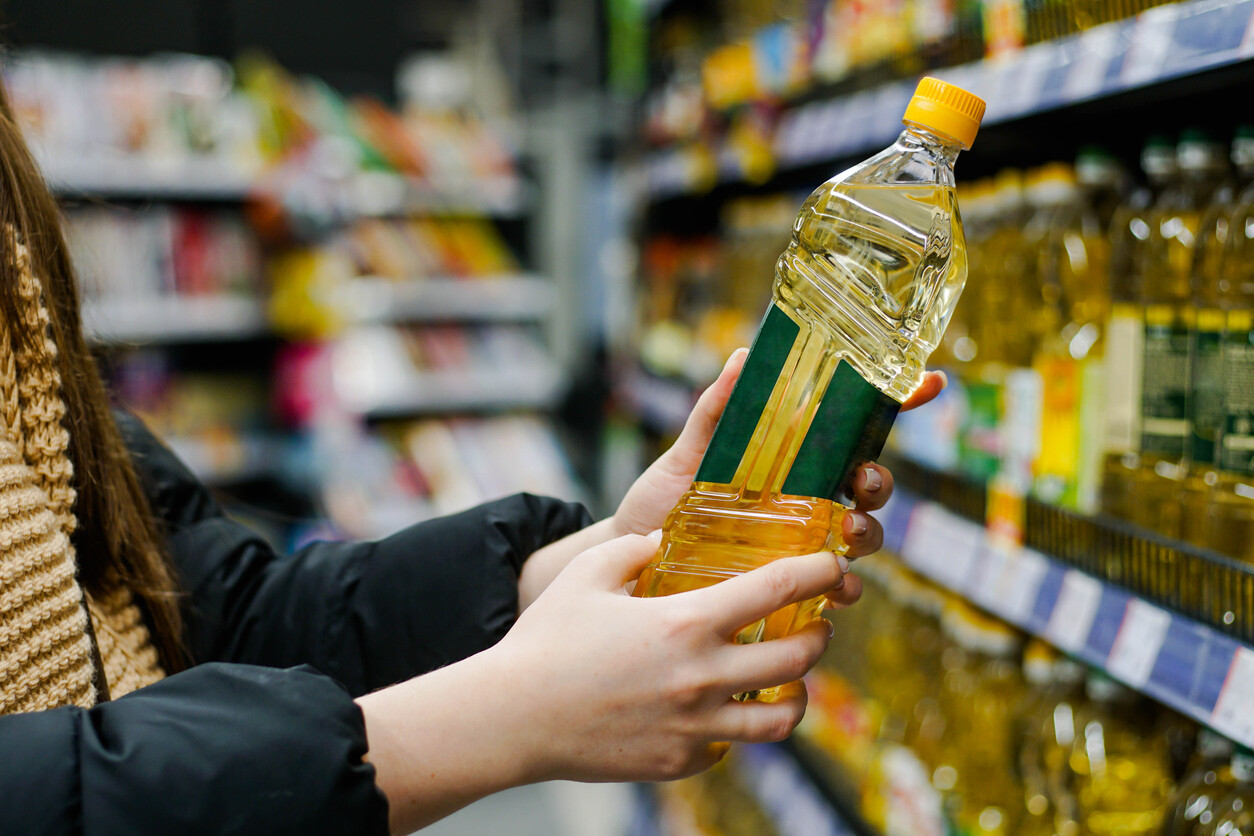Insight Focus
Seed oils are grown, processed and consumed all over the world. Different types of seeds flourish in different conditions and uses can vary, but they all tend to be used interchangeably as edible oils.
Which Oils are Considered Seed Oils?
Typically, seed oils are the name for edible oils made from seeds. Sunflower, cottonseed, safflower, canola, linseed, sesame and grapeseed are all common seed oils. But, particularly in commodity markets, other oils that don’t come from seeds can also be categorised as seed oils. These include soy and corn oil.
While all seed oils are vegetable oils, not all vegetable oils are considered seed oils. Rather, seed oils fall into a sub-category under the wider umbrella of vegetable oils.

For instance, olive oil is not considered to be a seed oil, but a vegetable oil since it is made by pressing whole olives. The same can be said for avocado oil and coconut oil.
The oil palm is a little more complicated since it yields two types of oil. The first – palm oil – comes from the flesh of the fruit, while the second – palm kernel oil – is derived from the seed. This means that, while palm oil is classified as a vegetable oil, palm kernel oil falls into the seed oil category.
Are Seed Oils Bad for You?
As discussed, seed oils are edible oils, so they most commonly are used in cooking and food preparation. They are used in a variety of ways, from baking to sauteing and dressing salads. Different seed oils are better used for certain purposes. For instance, those with a lower smoke point shouldn’t be used in cooking.
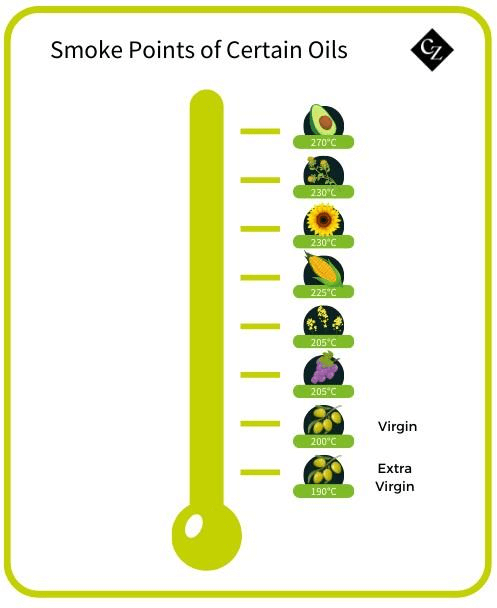
Seed oils can also be found in a lot of processed foods, such as cookies, margarine, mayonnaise and even milk substitutes. This is because they can increase shelf life and enhance flavour. But it also means they get a lot of negative press.
Despite some claims that seed oils are harmful, they can provide health benefits when used in moderation. For instance, canola oil contains healthy omega-3 fats and monounsaturated fatty acids – which are healthy fats. Safflower and sunflower oil contain a lot of omega-6 fats.
Omega-3 and omega-6 are both necessary in our diets and need to be provided through food, or else our bodies wouldn’t get enough.

How are Seed Oils Made?
Growing Conditions
The ideal growing conditions varies for each seed oil, which is why some plants are more prevalent in some countries than others. The best conditions for sunflower for instance is in full sun with frequent water. However, safflower and sesame both flourish in super-hot, dry conditions.
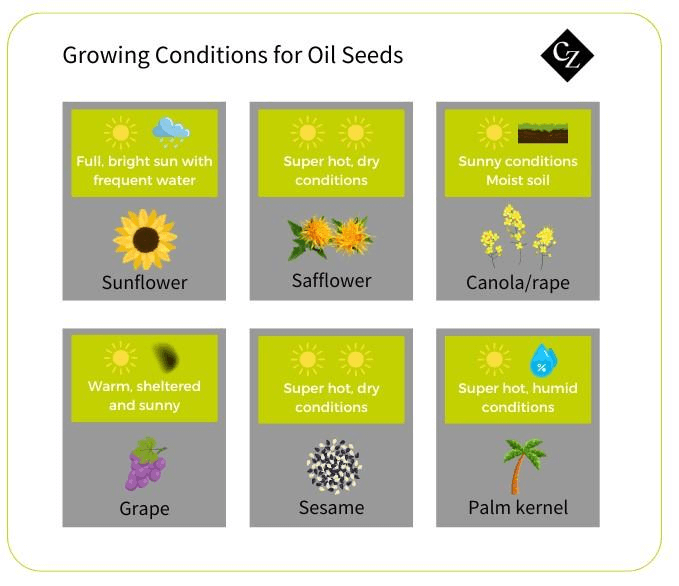
Processing
The processing of seed oils takes place in two stages: a mechanical stage and a chemical stage. The mechanical stage involves an expeller press, which compresses the nuts and seeds to extract the oil. The chemical stage involves soaking the remaining seeds in a chemical called hexane. The oil is then further refined, bleached and deodorised.
As well as the oil, hexane extraction also creates a meal byproduct, which is often used for animal feed. Using both the mechanical and chemical processes ensures that less than 1% of the oil remains in the meal, making it an extremely efficient process.

Major Producers
Raw Materials — Seeds
The EU27 and China are the world’s major producers of rape seeds, which is unsurprising given that the seeds are native to Europe and temperate Asia.
Despite the sunflower seed being native to North America, its cultivation spread to Eastern Europe, into Ukraine and Russia after it was discovered by European explorers in the 1500s. These countries are now the major cultivators of sunflower seeds.
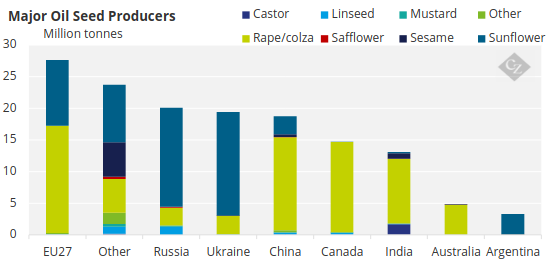
Processed Oils
Many of the processing capabilities to convert soybeans into oil are also in China and the Americas. Likewise, the EU27 has significant rape and canola processing facilities.
Due to the fact that seed oils are relatively easy to process, it makes sense that they are largely processed in the countries in which they are grown.
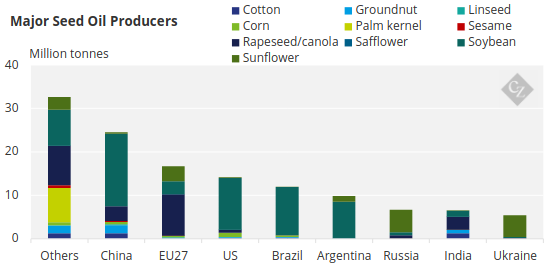
Source: FAOSTAT
Major Consumers
Every country in the world consumes seed oils in some form. In China, the preferred type of seed oil is soybean oil – likely due to its significant imports of soybeans. These imported soybeans are generally used as animal feed, so the extracted oil is then used in cooking.
In the EU on the other hand, rape, and sunflower oil and much more popular due to their availability. France and Germany are both major rape producers, with just shy of 9 million tonnes produced in 2021.
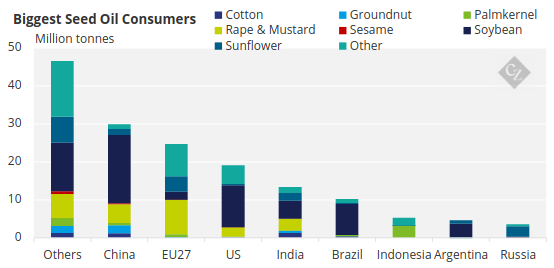
Source: FAOSTAT
In the US and Brazil, soybeans are again the preference due to availability.

Source: FAOSTAT
Major Importers & Exporters
The major seed oil exporters are the EU27 and Australia, followed by Canada and Ukraine. The volume of exports from Ukraine was reduced after the Russian invasion.
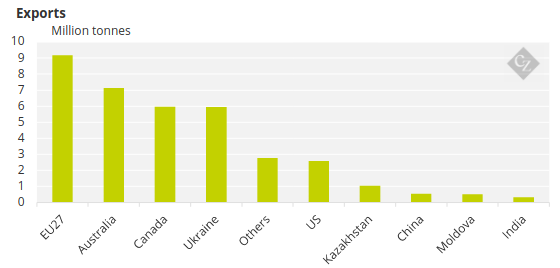
Includes linseed, rape/colza, sunflower, other categories (1204, 1205, 1206, 1207, 1208)
Source: UN Comtrade
The EU27 also is by far the world’s biggest importer of seed oils.
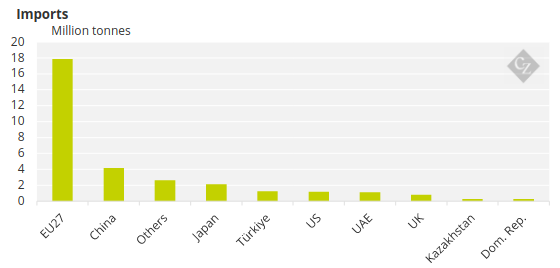
Includes linseed, rape/colza, sunflower, other categories (1204, 1205, 1206, 1207, 1208)
Source: UN Comtrade
Pricing Dynamics
As we have seen, there are a range of vegetable oils and seed oils with varying characteristics, growing conditions, uses and countries of origin. However, seed oils are often grouped together as they can be used interchangeably.
This means supply or demand issues within one crop tend to have knock on effects on pricing of others. As a result, vegetable and seed oil prices tend to move in tandem.
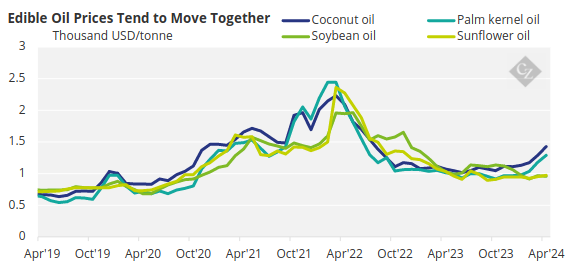
Source: World Bank
Concluding Thoughts
- There is a wide variety of oils that are categorised as seed oils, including canola oil, palm kernel oil, sunflower oil, safflower oil and corn oil.
- However, other oils, such as avocado oil, palm oil, olive oil and coconut oil are NOT classified as seed oils.
- Because they are present in a lot of processed foods to provide shelf stability and flavour, they are often demonised as harmful.
- However, there are certain health benefits to consuming seed oils in moderation – for instance, they can be a good source of omega-3 and omega-6.
